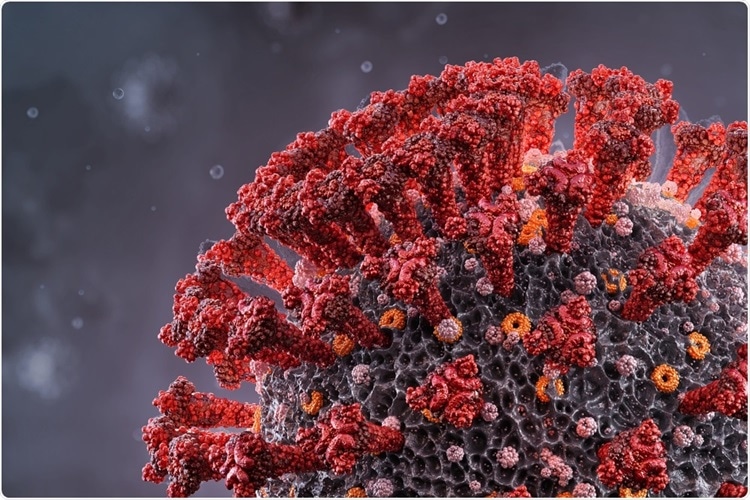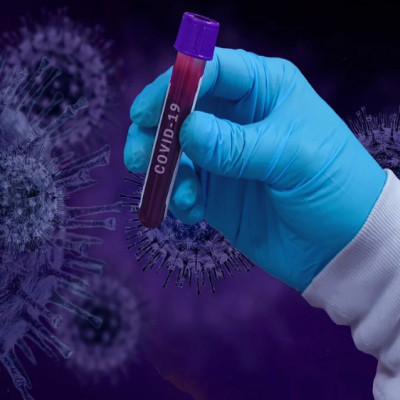The human respiratory mucosa is the primary route of entry for many viruses including influenza, parainfluenza, and respiratory syncytial viruses. Coronaviruses cause common cold as well as more serious respiratory diseases such as severe acute respiratory syndrome, Middle East respiratory syndrome, and coronavirus disease (COVID-19). All recent coronavirus outbreaks have emerged unexpectedly and endangered public wellbeing, leading to disastrous pandemics.

Nano-based technologies help quickly repurpose anti-viral drugs
The design of antiviral medications is a time-consuming process that takes years before they become readily available for treatment. Hence, it is crucial to invest in a technology platform that helps quickly repurpose drugs when needed during such pandemic situations using learnings from the previous pandemics. Nanomaterials or nanoformulations provide such technology platforms that can investigate the basic science and biological interactions of existing drugs and can help with potential vaccine and therapeutic development.
Advanced nano-based technologies provide important info on specific physicochemical properties of molecules, which helps resolve key issues related to anti-viral treatments. A recent review by researchers from Malaysia and Japan offers an overview of the latest research on the use of nanomaterials in the treatment of coronavirus infections. They also raise issues and perspectives of antiviral nanoformulations and discuss the potential use of nanomaterials against the current COVID-19 pandemic.
Nanomaterials in biomedical applications
Nanomaterials have been used in several pharmaceutical applications including targeted drug distribution for decades. The use of engineered nanomaterials to inactivate viruses or prevent viral binding to host cell receptors are some notable nanoscale antiviral therapies. Moreover, nanocarriers help transmit antigens more effectively due to efficient surface functionalization and the ability to carry multi-adjuvanted antigens.
Nanomaterials are used in both active and passive targeted therapies. Passive targeting occurs in a targeted nanoparticulate delivery system due to the increased permeability caused by inflammation or malignancy, which leads to the accumulation of more nanotherapeutic agents in the disease site. Active targeting involves the incorporation of target ligands such as antibodies, peptides, sugars, and proteins to carry the nanotherapeutics to a specific site, receptor, or epitope.
Nano-based therapeutics used during previous coronavirus outbreaks
Nano-based formulation approaches like delivery carriers, nanovaccine transfer platforms, and nanodrugs were developed against previous coronaviruses. These approaches were successful in delivering both antigens and adjuvants, preventing viral antigen agglomeration, and improving the immune response against MERS-CoV in prime-boost immunization.
High surface energies of nanoparticles enhanced the antigen corona formation while bionanoparticles improved the inactivated viral encapsulation in IBV vaccines. Since inactivated viral vaccines did not offer sufficient protection against SARS-CoV, immunostimulant/ nanoparticle complexes and plasmid DNA-loaded nanoparticles were developed to elicit a mucosal immune response.
Silver (Ag) & gold (Au) nanoparticles in SARS-Cov-2 prevention and treatment
Over 283 candidate vaccines have been developed in the last year to induce an immune response against SARS-CoV-2. Some of these vaccines use nanoencapsulation of viral proteins or RNA to prevent the degradation of their genetic material. Ag nanoparticles with stabilizers have shown to be effective anti-TGEV action and Ag2S nanoclusters are to prevent (porcine epidemic diarrhea vaccine) (PEDV) RNA synthesis and budding. Additionally, Ag nanoparticles have been suggested for use as inhalable nanotherapeutics against SARS-CoV-2.
Au nanoparticles are good candidates for antigen conjugation due to their biocompatibility, stability, and surface functional chemistry. Non-metallic nanoparticles such as curcumin carbon dots (CCM-CDs) and poly lactic-co-glycolic acid (PLGA) have been used as effective antiviral therapies against PEDV. CCM-CDs show inhibitory activity on negative-strand RNA synthesis and PLGA protects the trapped vaccine from protease degradation. Also, the limitations of common vaccine adjuvants have been overcome by the development of nanoadjuvants. Nanocarriers that help in antiviral drug delivery have been shown to be excellent antiviral efficiencies.
Despite their significant role in nanocarriers or nanovaccines, some concerns such as toxicity and accumulation in cells exist over the use of nanoparticles in biomedical applications. Researchers are hopeful that the versatile features of nano-based systems can help improve these limitations.
Read the original article on News Medical.
